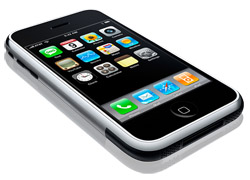Of iPhones and Androids: A Tale of Two Business Models - Classic Shelly

The following commentary was originally published on June 13, 2008.
Unless you lead a very sheltered life, you have probably read all kinds of stuff about Apple's new 3G iPhone. Yes, the retail price will be $199 for the 8 GB model. Yes, that makes people who bought an iPhone on May 15th for $399 really mad. But they shouldn't be. A new 3G iPhone is actually more expensive to own and use than its 2.5G predecessor. When you combine the data plan, voice and text messaging, you will pay between $220 and $270 more for the new device.
The 3G iPhone is an object lesson in the "walled garden" value proposition: a closed system, available in over 70 countries worldwide, using a time-tested, carrier subsidized business model.
There's nothing industry leading here … of course there is! It's not Apple's job to lead the industry in anti-carrier business models, it's their job to increase shareholder value. I've seen estimates that put Apple's revenue for "Steve Job's Excellent Adventure in 3G" between $6 and $7 billion, depending on which model sells best. This sounds like a good day at the office.
Let's compare and contrast this "old fashioned" model with its open source, would-be, competition: Google's Android platform.
Like so many people, the Search Gods are not in love with walled gardens. Like us mere mortals, they dream of a day when any manufacturer can market a device that is interoperable, usable everywhere and features applications created by an open source community of dedicated technophiles – Gootopia!
Google likes this idea so much, they created Android: the first truly open source code base for mobile phones. They developed the system with the idea of giving it away to manufacturers in return for allowing Google to place ads inside android mobile programs. People who have seen the demo (like me) are blown away by the capabilities. Depending upon your point of view, it's designed to be either an iPhone knock-off or an iPhone killer. At the moment it's neither because no company has signed on to make a phone.
At the very least, a handheld device running Android software would compare favorably to an iPhone. Some say that with Google behind it, it would be much, much better. So, why hasn't anyone jumped on the model?
We might be able to gain some insight from David Wood, Symbian's Research Chief. He said, "People have been predicting the success of open source for some time [but] fragmentation is easy, and integration is hard."
What about the carriers? Certainly if Google could find a carrier willing to sell an Android phone at retail, someone would agree to manufacture it.
And now we come to the tale of two business models. Without a walled garden, there is no incentive for any carrier to market the device. When you think about the extreme competition in mobile and the difficulty of the retail business, it doesn't take long to come to the conclusion that open source is not a good fit.
What carrier would be willing to market a device that you could easily use with another carrier's plan -- or worse, in Kevin Martin's new free national wireless broadband cloud? How would you debug open source applications across carriers? With the downward price pressure on pure bits, where could an Android manufacturer or carrier value-add and charge more?
I've seen a bunch of articles in the past few days taking Apple to task for not reinventing the telecom business. But, if you think about it. There is a real reason that the subsidized handset model has evolved. Some have called it a drug. Others liken it to the holiday sales every month that plague the retail business. (Yes, there is a holiday in every month of the year except August and that's when retail has their "back to school" sales. Why would any customer ever buy anything that was not on sale?)
The key take-away from the new 3G iPhone hype machine should be the same as the key take-away from the 2.5G iPhone hype machine. Apple sells benefits, while everyone else sells features. Since average consumers are only interested in benefits: calling someone, texting someone, photo galleries, video playback, maps, web browsing, email, etc. The technical features that enable these benefits are uninteresting or just plain confusing. How much RAM does the phone have? How many mega pixels is the screen? How fast is the data transfer rate when it's plugged into a USB port? Answers to these questions do not sell phones to average consumers. And the biggest share of wallet will go to the products that get the biggest share of mind.
I've heard that over 20,000 developers submitted their applications for inclusion in the Apple 3G iPhone store and only 4,000 were accepted. Is there an application in there that will benefit you? Of course there is. Will you buy a 3G iPhone to get that benefit? Apple is counting on it.
Open source mobile or Walled Garden mobile with opportunities for developers to enhance the user experience? Congrats, Steve! I think you got it right again.
Shelly Palmer is a consultant and the host of MediaBytes a daily show featuring news you can use about technology, media & entertainment. He is Managing Director of Advanced Media Ventures Group LLC and the author of Television Disrupted: The Transition from Network to Networked TV (2008, York House Press). Shelly is also President of the National Academy of Television Arts & Sciences, NY (the organization that bestows the coveted Emmy® Awards). You can join the MediaBytes mailing list here. Shelly can be reached at shelly@palmer.net
Check out the Shelly Palmer Report archive.


